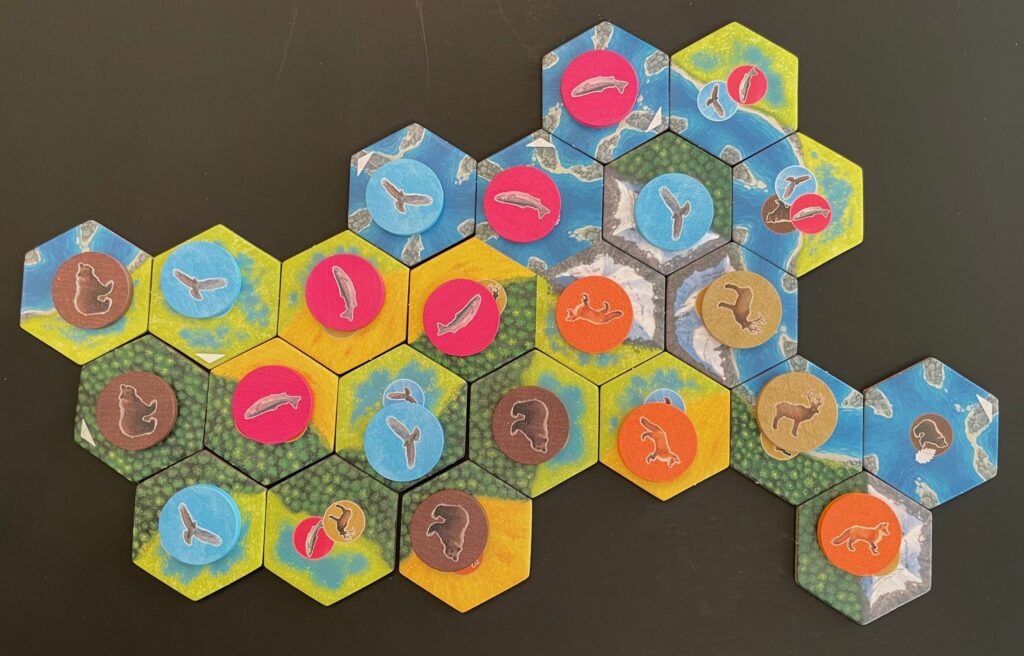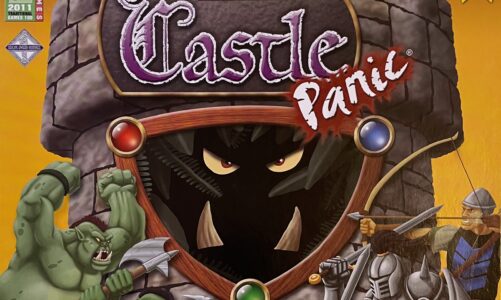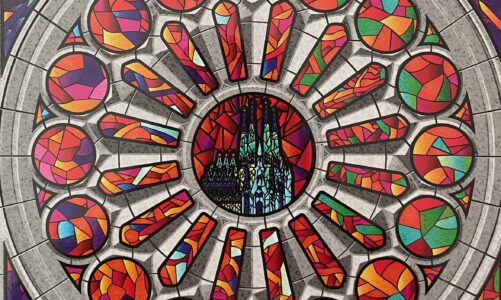We played our first game from the shelf of shame challenge, and it’s Cascadia! The Cascadia board game, designed by Randy Flynn and published by Flatout Games, has been a bit of a surprise for us. I mainly backed this Kickstarter to get a copy of Calico, but it’s Cascadia that I’ve truly fallen in love with. Let’s talk about what makes this game so special!
What’s in the Cascadia board game box?
Cascadia includes 85 cardboard tiles that represent several types of habitats. There are 100 colorful wooden wildlife tokens (20 for each animal), and a sturdy drawstring bag is included to store them for game play. Lastly, there are 21 wildlife scoring cards and a score pad! The art (by Beth Sobel) and quality of the components is excellent.
How fun would it be if there was an upgrade pack that included 3D animals to be used in place of the wooden wildlife tokens!
How is Cascadia played?
The basics.
Cascadia is mechanically simple. Players will take turns drafting 1 habitat tile and 1 wildlife token from a central marketplace. Then, the tile is placed into your habitat, and if possible, the wildlife token is added to a corresponding tile in your habitat. That’s it. Those are the basics for how to play.
Let’s dig a little deeper.
Aside from tiles and tokens, Cascadia has wildlife scoring cards. Each type of animal has a unique way it needs to be arranged in your habitat to score points. The cards represent these scoring possibilities.

The habitat tiles in the game have images of the animals that are allowed to be placed on it. You need to draft the right tiles, showing the animals you need, and then you need to place that tile in the right configuration to score points.
Along with scoring points for the various ways you’ll arrange the animals in your habitat, you can also score points for the habitat tiles themselves. You’ll want to try and group as many of the same types of terrain tiles together as possible. If you’re familiar with King Domino, it’s the same type of tile-laying idea. You can score points for the total number of tiles of each type of habitat you have, and you can score extra bonus points if you have the largest grouping of each different habitat.

Nature Tokens
There are nature tokens that can be collected by placing wildlife tokens on tiles that are marked with a keystone. If you look in the image above, there is a bear tile with a keystone marking (white triangle) on it. Nature tokens allow you some flexibility regarding the tile and token you select. They can also give you the ability to draw fresh wildlife tokens in the marketplace area!
The Cascadia Family Variant
One of the great things about Cascadia is the inclusion of a special wildlife scoring card that has a family variant (shown above). Players will score points for groupings of 1-4 identical animals instead of animal specific patterns. Unless you are introducing this game to seasoned gamer, I highly recommend starting with this scoring card (or the intermediate variant on the reverse side). It’s a simple way to get a feel for how the game works, and it’s easy to swap out the scoring cards with more advanced ones when the players are ready!
Tip: As a second steppingstone, you can also switch to using the animal specific scoring cards but skip the scoring of the habitat tiles! One less thing to think about…
Cascadia Replayability
The designers of Cascadia have done something clever. Towards the back of the rulebook there is a page called Accomplishments. There’s a chart with room for 5 different players to keep track of their accomplishments, and there’s a couple pages that detail what the accomplishments are. Once you achieve the accomplishment, check it off on the chart. I love things like this. It will definitely keep me coming back for more.

Cascadia Solo Mode
Cascadia includes a pretty simple solo mode. You’ll setup a game for 2 players. Each round you’ll draft a habitat tile and a wildlife token, and you’ll discard a habitat tile and a wildlife token (which simulates your opponent). Play continues like a normal game.
Cascadia vs Calico
Shortly after my daughter and I finished playing a game of Cascadia, she asked me if I wanted to play Calico. It made me laugh because even at 10 she could feel the similarities between these games. They are both published by Flatout Games, but designed by different people. They both have very simple mechanics. Draft tiles, and then place them onto your board while paying close attention to various patterns.
Conclusion
I really do love Calico, but I can’t stop pulling Cascadia out to play. I’ve played it dozens of times now, at every player count, and with different variations. I’ve played with different people. I like being able to start simple and build up to a chunkier game that hurts the brain a bit. This game just seems to offer a bit more than Calico, but both games will happily remain in our collection!





One thought on “Cascadia Board Game Review”
Comments are closed.